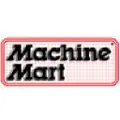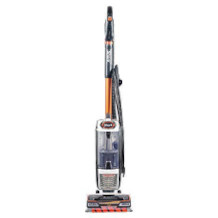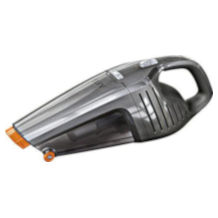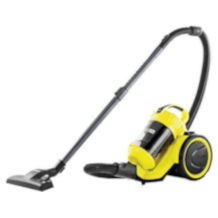Multi-purpose vacuum cleaner purchasing advice: how to choose the right product
- The most important facts in brief
- Thanks to their special design, multi-purpose vacuum cleaners are suitable for removing dust and sand as well as for vacuuming up liquids and damp dirt.
- They are suitable for use in the home, garden, workshop or construction site.
- The most important purchase criteria are the suction power and the capacity of the collection container.
- For occasional, short jobs in the household, small devices with a 10-litre tank and a motor power of 500 watts are usually sufficient.
- For regular removal of large amounts of dirt, it is best to choose a powerful model with at least 1,000 watts and a 20-litre tank.
Vacuuming up dirt of all kinds
There is a hoover in almost every household. It makes it much easier to keep your own four walls clean. However, a normal hoover reaches its limits when it comes to damp dirt and liquids – these would damage the motor and put the device out of action. It would be so practical to simply vacuum up the mud carried into the house with the shoes or the water accidentally spilled. The solution: a multi-purpose vacuum cleaner. These appliances easily pick up both dry and wet dirt thanks to special technology and an integrated collection container.
Many names for one appliance
Multi-purpose hoovers are also known as all-purpose hoovers and industrial hoovers. The various terms are usually used synonymously, with industrial hoovers often referring to particularly powerful appliances with a large collection container for professional use. Wet hoovers, on the other hand, fall into a different category. These wash vacuum cleaners clean with water.
How do multi-purpose vacuum cleaners work?
Multi-purpose hoovers are constructed similarly to normal floor hoovers. The motor, filter and collection container are located in a carriage with wheels that you pull behind you while vacuuming. The suction tube is attached to it, with the nozzle at the front. Classic hoovers take in the ambient air along with the dirt, which they filter and pass through the motor for cooling. To enable multi-purpose vacuum cleaners to suck in moisture without damaging the motor, the sensitive technology is located at the top, while the dirt is directed downwards into a collection container. A special foam filter protects the pump from dirt and moisture. For dry vacuuming, users replace this with a pleated filter; such filters are also used in conventional hoovers. They also have to use a classic hoover bag.
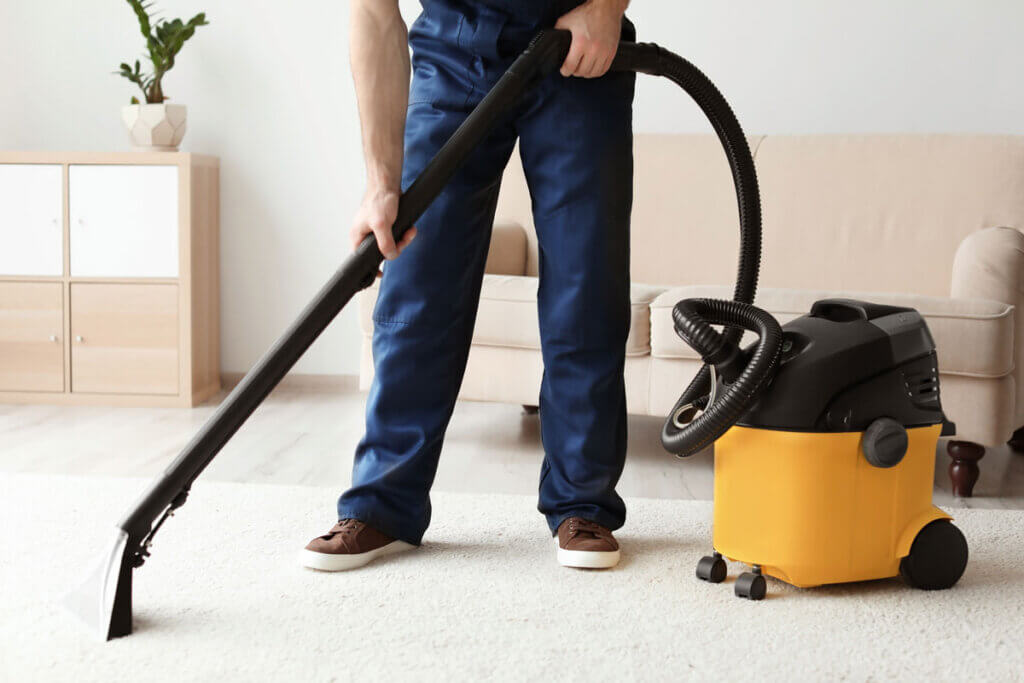
The areas of application of multi-purpose vacuum cleaners
In principle, multi-purpose vacuum cleaners can be used wherever there is both dry and wet dirt. Originally, these powerful devices were mainly used in the professional sector, but they are now being used more and more in private households. There they perform the following tasks, among others:
- Removing damp dirt such as leaves, grass cuttings or melted snow from the hallway.
- Vacuuming spilled drinks and broken glass
- Cleaning the car and garage
- Clean terrace and balcony
- Remove leaves and damp soil from garden, greenhouse or tool shed
- Clean the pool or wading pool
- Remove building rubble during and after renovation work
- Remove dust and sawdust from workshops
However, multi-purpose hoovers are not a substitute for the classic floor hoover, as they are very noisy and are only suitable to a limited extent for vacuuming on textiles such as carpets and upholstery.
Important purchase criteria
The most important criteria for buying a multi-purpose vacuum cleaner are its performance and suction power as well as the volume of the collection container. If, for example, you only want to use the appliance in the household to remove slush from the entrance area, a smaller model with less power is sufficient. For use on the construction site, on the terrace or in the workshop, the volume of the collection container and the power should be correspondingly higher. Furthermore, when choosing a multi-purpose vacuum cleaner, you should pay attention to hose and power cord length, weight and handling as well as noise level. Depending on the intended use, a blowing function or an appliance socket can be useful. In addition, the various devices sometimes differ considerably in price.
Performance and suction power
Smaller multi-purpose vacuum cleaners have a motor power of about 500 to 1,000 watts. They are usually sufficient to vacuum up leaves, slush or damp sand, for example. For removing coarser dirt such as gravel or building rubble, you should choose a powerful model with at least 1,000 watts. Special industrial hoovers are even available with up to 3,000 watts of power.
However, high motor power does not automatically mean high suction power, as other factors such as the workmanship of the housing and the length of the suction hose play a role in the latter. Some manufacturers, for example Einhell, list the maximum suction power on their models in addition to the motor power, which provides more information about the suction power. It is given in millibars (mbar) or metres of water column (MWS) and expresses the height up to which the device could theoretically suck water. For example, a multi-purpose vacuum cleaner with a suction power of 250 millibar (equivalent to 2.5 metres water column) can suck water up to a height of 2.5 metres.
Collecting tank
The size of the collection container of your multi-purpose vacuum cleaner also depends on its intended use. If you only want to use it in the household, smaller models with a tank volume of 10 to 20 litres are sufficient. For use on building sites, in the garden or in the workshop, it is better to choose a larger model with a capacity of 20 to 50 litres. Make sure that the collection container has a drain valve so that you can empty it easily. There are also particularly handy models with tank volumes of one litre to 10 litres. These are suitable for occasional, short jobs.
Hose and power cord length
The greater your range of movement with the multi-purpose vacuum cleaner, the longer the suction hose and power cable need to be. The length of the power cable for common multi-purpose vacuum cleaners varies between 1.5 and 4.0 metres. A long hose of at least 2.5 metres is recommended, especially for large, heavy models. Then the carriage of the multi-purpose vacuum cleaner can remain in place while you clean the surroundings. Some models come with an extension tube.
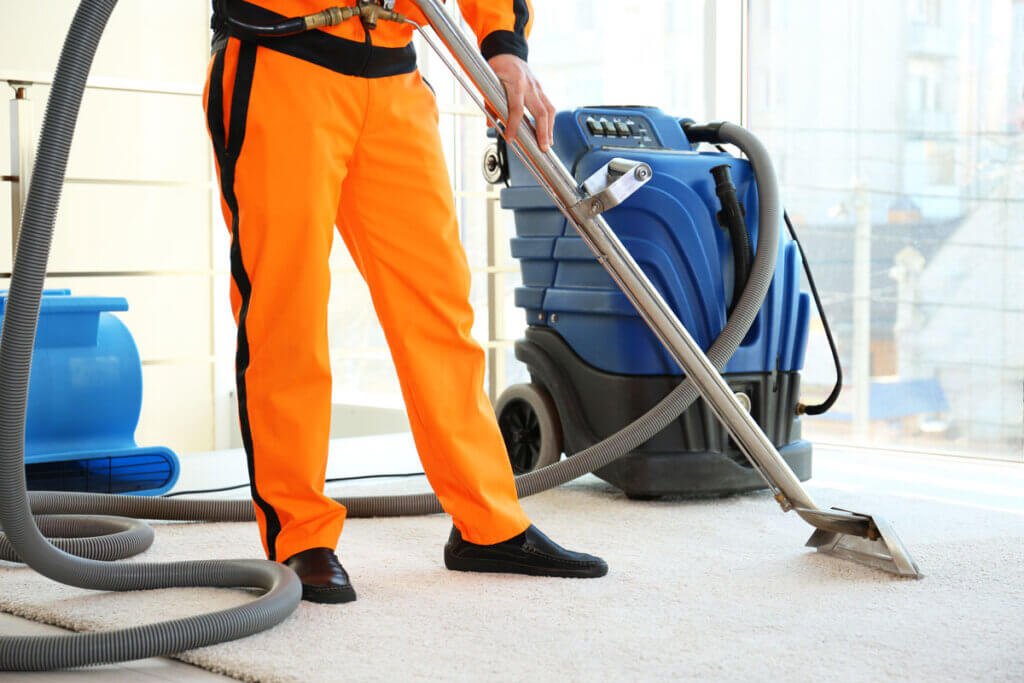
Battery or mains socket?
In addition to corded multi-purpose vacuum cleaners, there are also battery-powered models. With these, you don’t have to worry about the length of the cord; instead, the action radius depends on the battery power. Normally, this is enough for about 30 minutes of vacuuming before the appliance has to be returned to the charging station. Battery-operated multi-purpose vacuum cleaners are usually easier to handle and have less suction power than corded models. They are good for cleaning car seats, for example, or for short jobs in the garage. Some models do not come with a battery and charger, so you have to buy them separately.
Weight and handling
In addition to the power supply and hose length, the weight of a multi-purpose vacuum cleaner also has an influence on handling. Most models weigh between 7 and 15 kilograms. There are also particularly handy battery-powered multi-purpose vacuum cleaners that weigh less than five kilograms. They are well suited for short jobs in the home or car. With heavier devices, the carriage is ideally equipped with wheels so that you can comfortably pull it behind you. Smaller units are similar to conventional handheld hoovers. Holders for the cable and hose are also recommended. This allows you to store the multi-purpose vacuum cleaner without a tangle of cables. This is because, unlike conventional hoovers, most wet-dry models do not have a cable retractor. If you plan to transport your appliance frequently, you should also look out for a carrying handle.
Volume
Wet-dry vacuum Compared to conventional hoovers, wet-dry vacuums use more powerful motors and are correspondingly louder. Even the quietest models, such as the battery-powered multi-purpose vacuum cleaner Einhell TE-VC 18/10 Li-Solo, produce a maximum noise level of 70 to 80 decibels. That is nearly as loud as an average washing machine during the spin cycle. In contrast, louder units operate at over 90 decibels, which is about the same as a door slam. You should only operate these with hearing protection.
Blower function
Especially for use in the garden, it is practical if the multi-purpose vacuum cleaner has a blowing function. This allows you to use it as a leaf blower and to conveniently and thoroughly remove dirt from hard-to-reach places such as the corners of the tool shed or the gutter. In addition, some multi-purpose vacuum cleaners with a blowing function can be used to inflate air mattresses, inflatable boats or splash pools.
Integrated appliance socket
If you want to use your multi-purpose vacuum cleaner as a workshop vacuum cleaner, you will benefit from an integrated appliance socket. This allows you to supply power to power tools, such as a grinding machine, via the multi-purpose vacuum cleaner. The vacuum cleaner then switches on automatically as soon as you start using the connected device. When making your choice, make sure that the power of the integrated socket is sufficient for the appliances you want to connect.
Price
Inexpensive multi-purpose vacuum cleaners are available from around 50 euros. These devices are usually smaller rechargeable models that are more suitable for short uses and small amounts of dirt. For powerful devices with a larger collection container and practical accessories, you should budget at least 90 euros. Most multi-purpose vacuum cleaners range in price from 80 to 460 euros. Expensive models cost over 1,000 euros. This range usually includes special industrial hoovers for professional use.
Well-known brands: Bissell | Bosch | Einhell | Husqvarna | Kärcher | Makita | Nilfisk |Stihl
Various filters and nozzles
Many multi-purpose vacuum cleaners come with suction nozzles and filters for different purposes. For dry vacuuming, they usually need a pleated filter to clean the exhaust air and a dust bag. The latter is made of either paper or fleece. Fleece bags consist of several layers and therefore have a higher filtering capacity, which makes them well suited for allergy sufferers. When wet vacuuming, a foam filter protects the motor from wetness and dirt. If you want to use your multi-purpose vacuum cleaner to vacuum up cold ashes from the fireplace or barbecue, for example, a special ash filter is required.
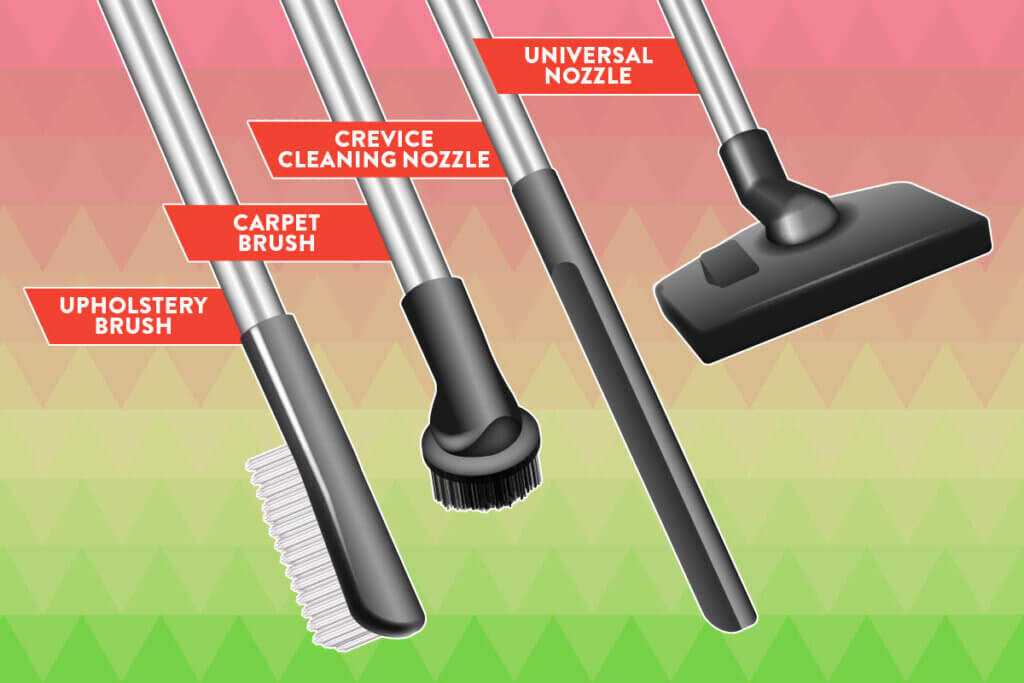
The common nozzles that multi-purpose vacuum cleaners are equipped with include the following four:
- Universal nozzle: Counterpart to the floor nozzle of a classic hoover for cleaning all kinds of larger surfaces.
- crevice nozzle: narrow, long nozzle for cleaning hard-to-reach corners and gaps
- Carpet brush: Small nozzle with round brush head for removing deep-seated dirt from carpets.
- Upholstery brush: Small nozzle with elongated brush head for cleaning upholstery and car seats
Cleaning the multi-purpose vacuum cleaner
If you are not only vacuuming dry dirt, cleaning the multi-purpose vacuum cleaner is particularly important to prevent mould from forming in the appliance. Empty the collection container after each use. If it is very dirty, rinse it thoroughly and wipe it with a damp cloth. Then let it air dry. Do not put the tank back into the appliance until it is completely dry.
For a consistently strong suction power, it is also necessary to clean the filters regularly. On most appliances, these are attached with a simple twist or plug-in mechanism and are easy to remove. Depending on the degree of soiling, it is sufficient to tap out the filters. Heavily soiled filters should be rinsed thoroughly and then left to dry. If the nozzles or the outside of the unit are dirty, simply wipe them with a damp cloth.

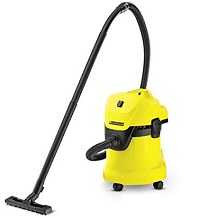
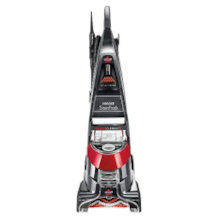
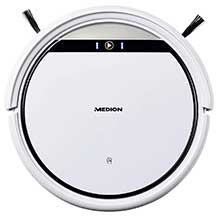
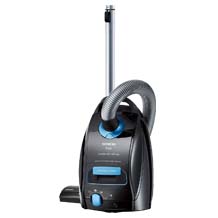
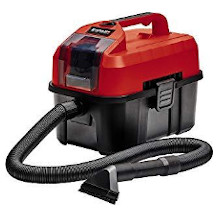
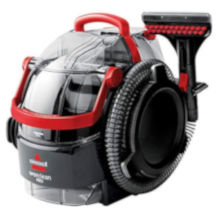
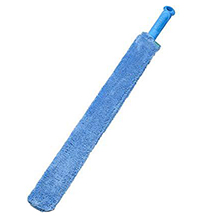
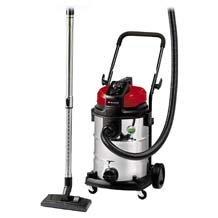

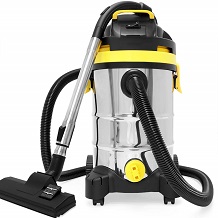
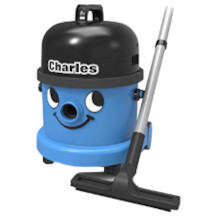
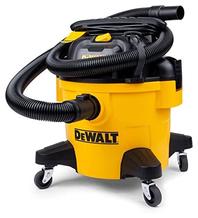
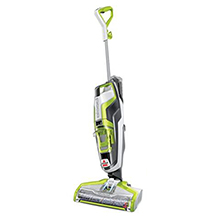
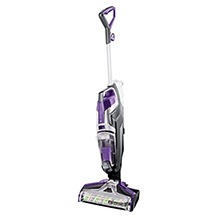
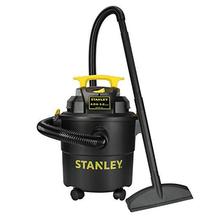
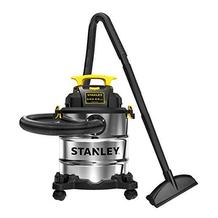

 1,544 reviews
1,544 reviews




